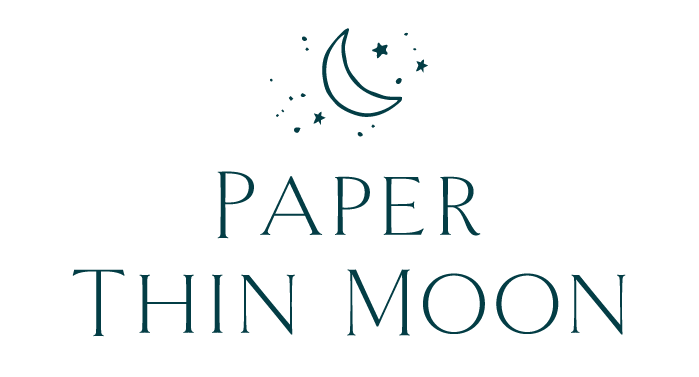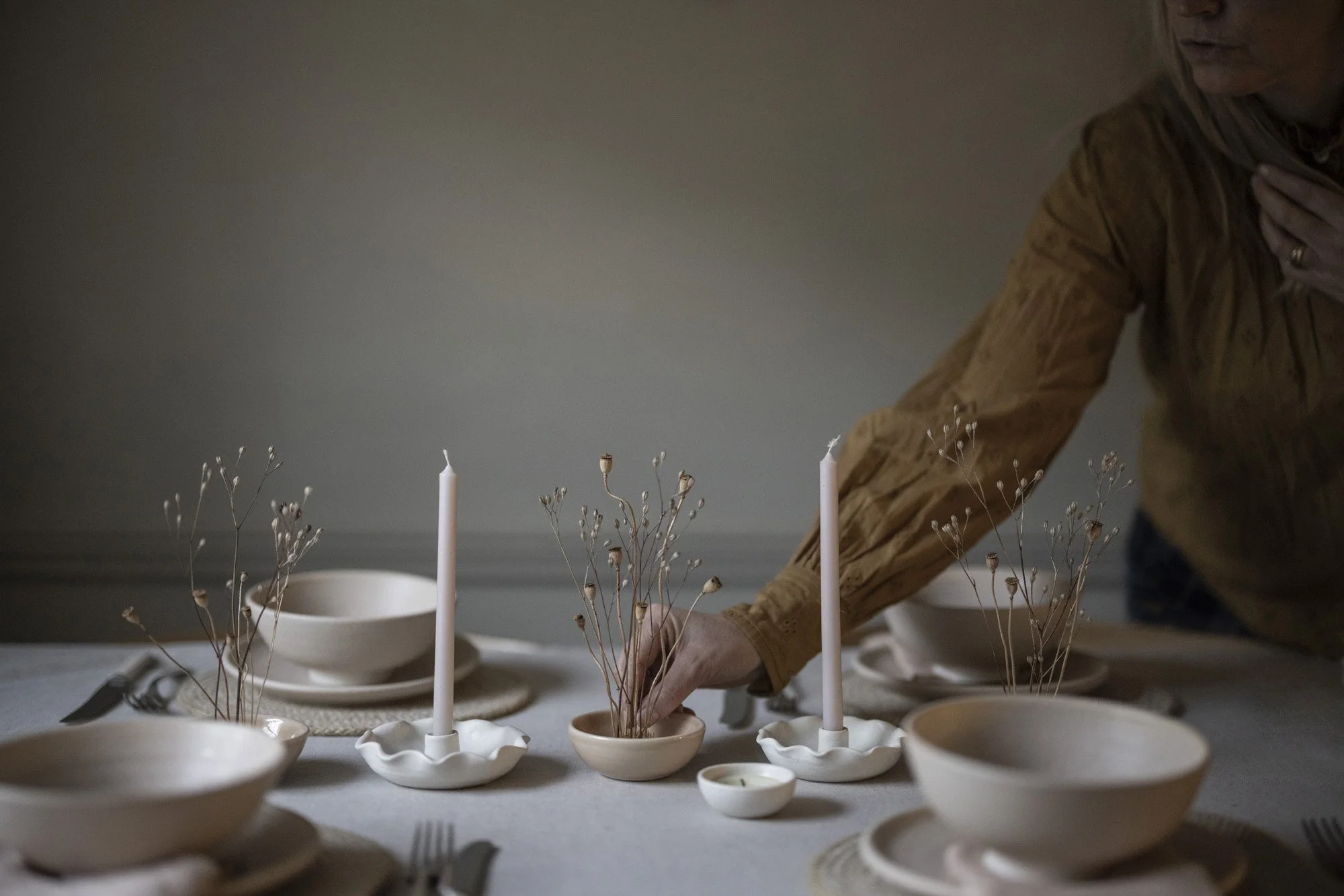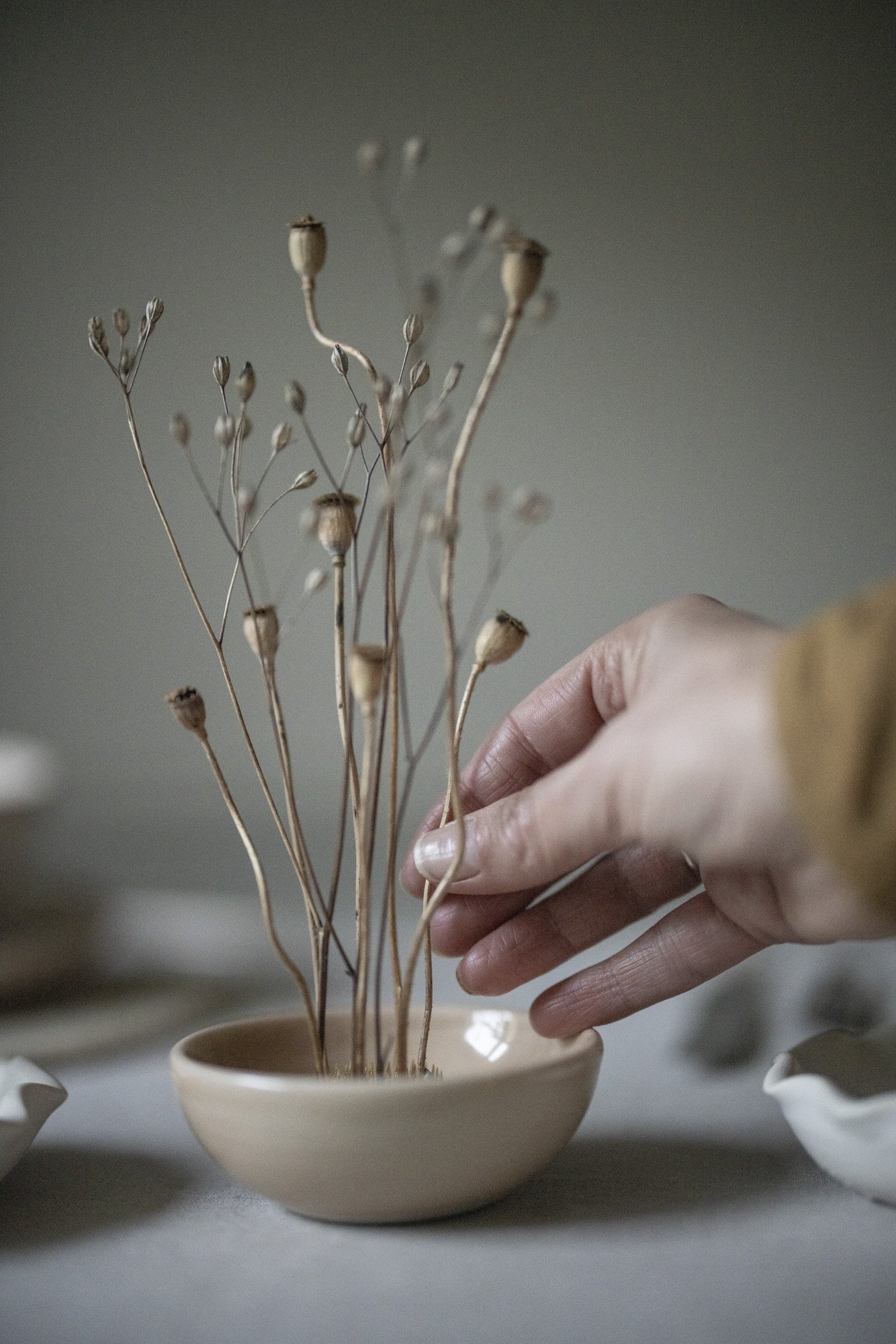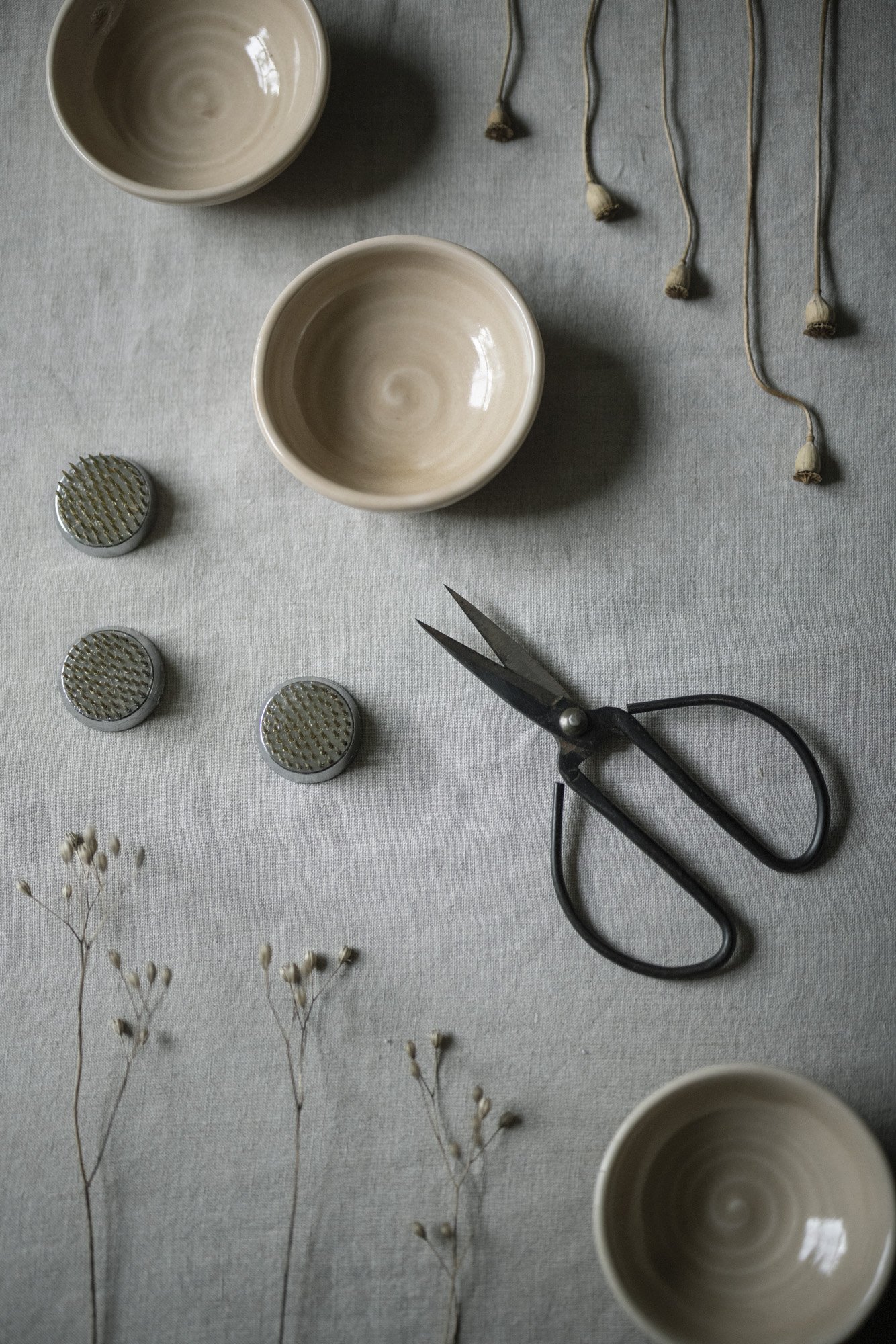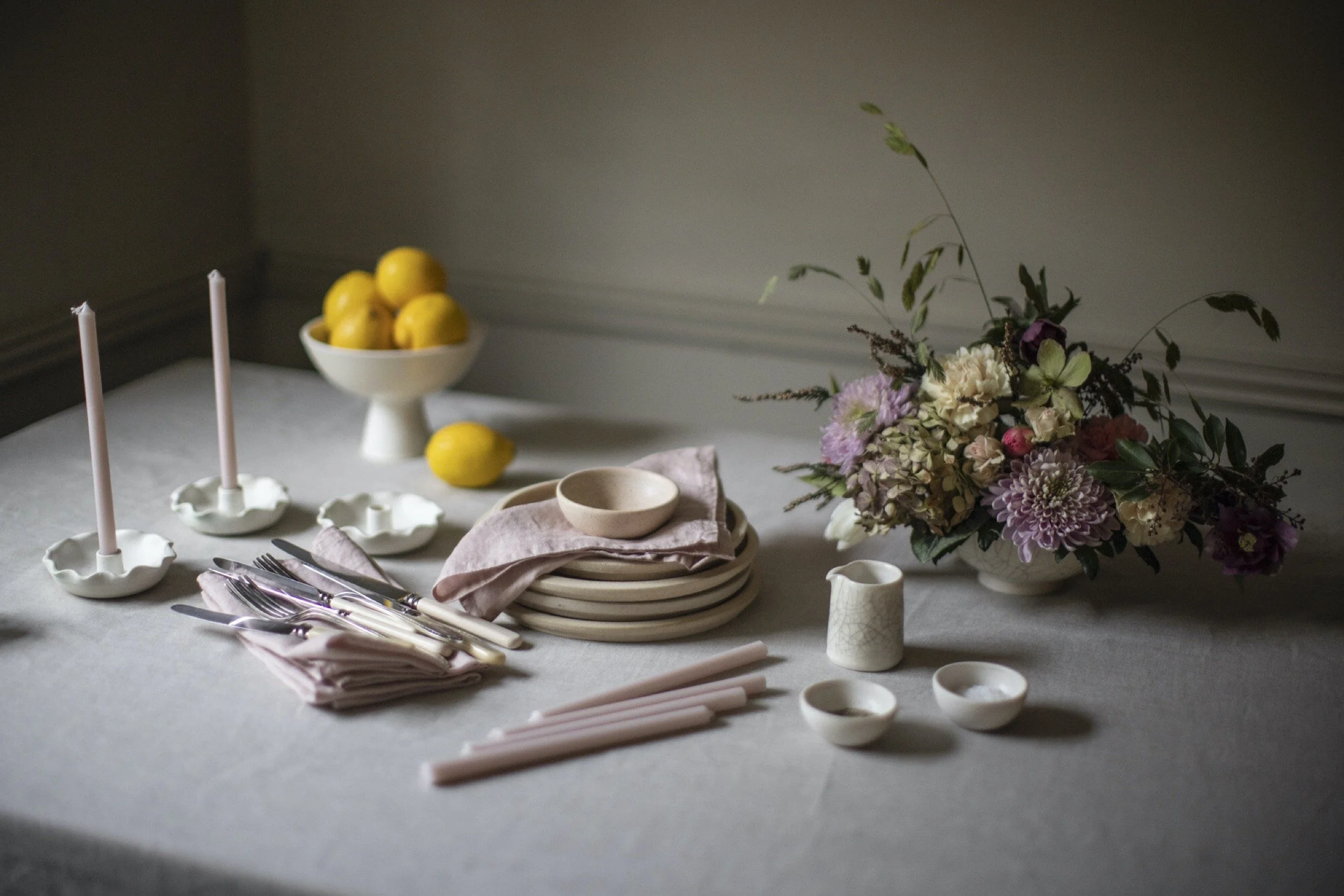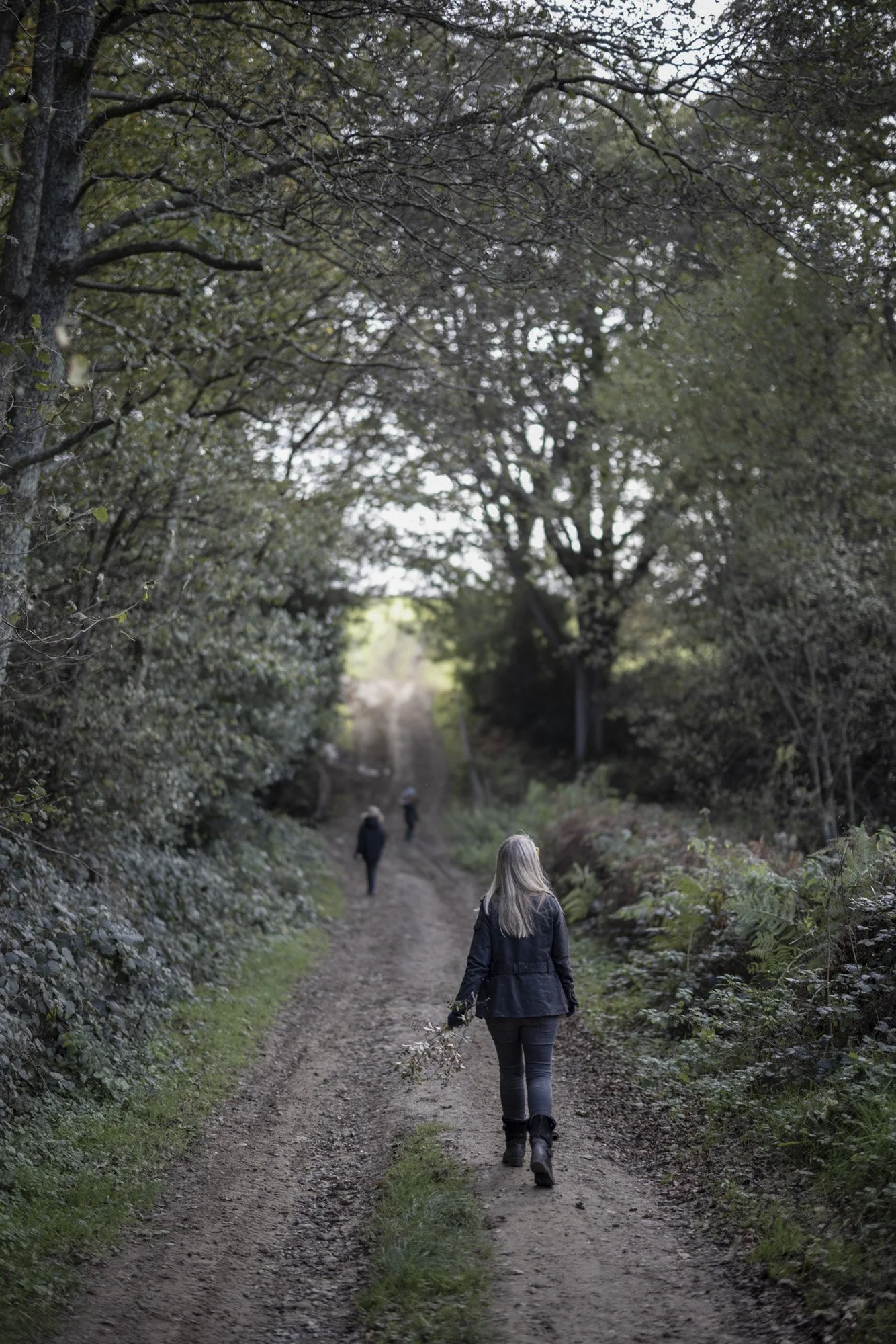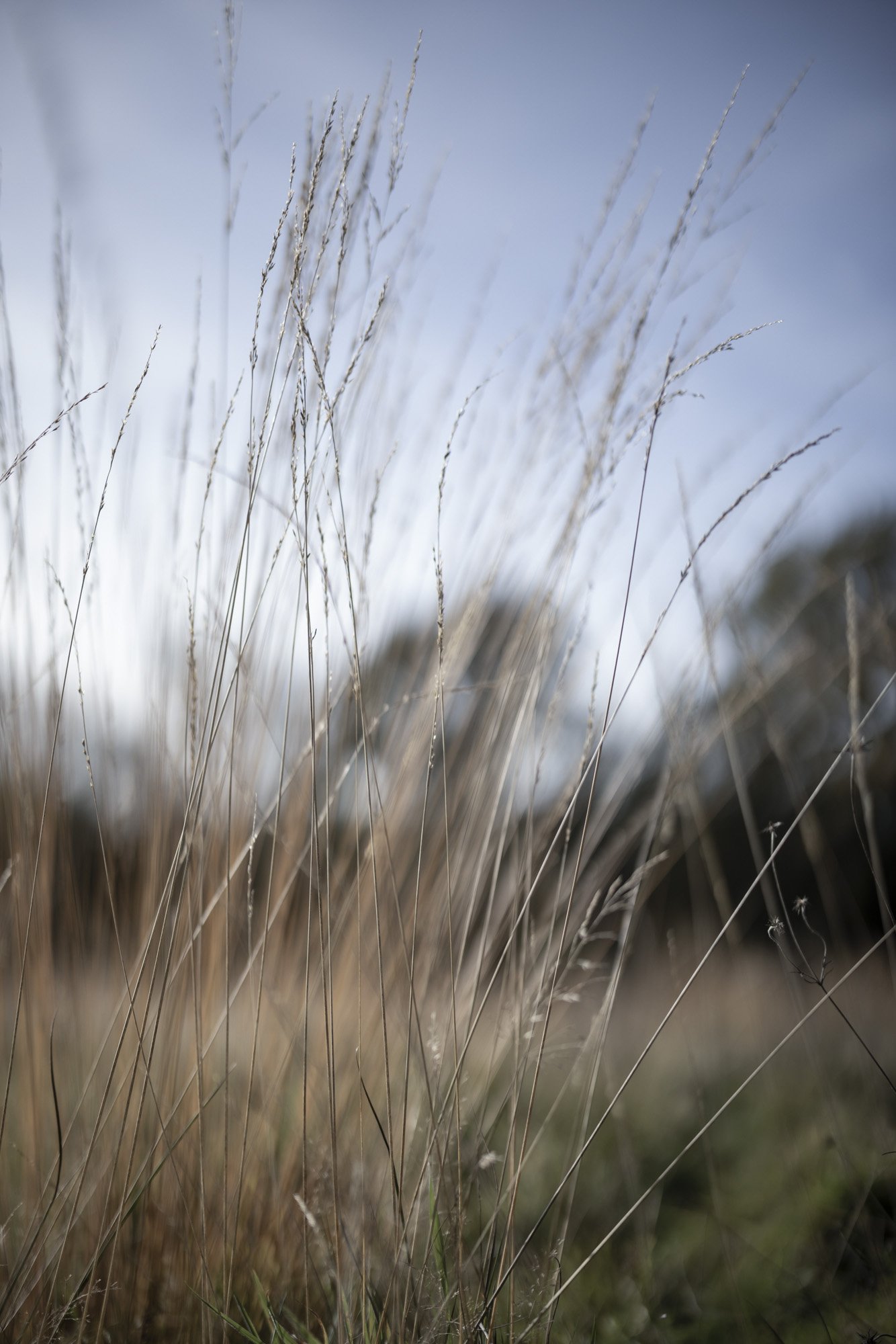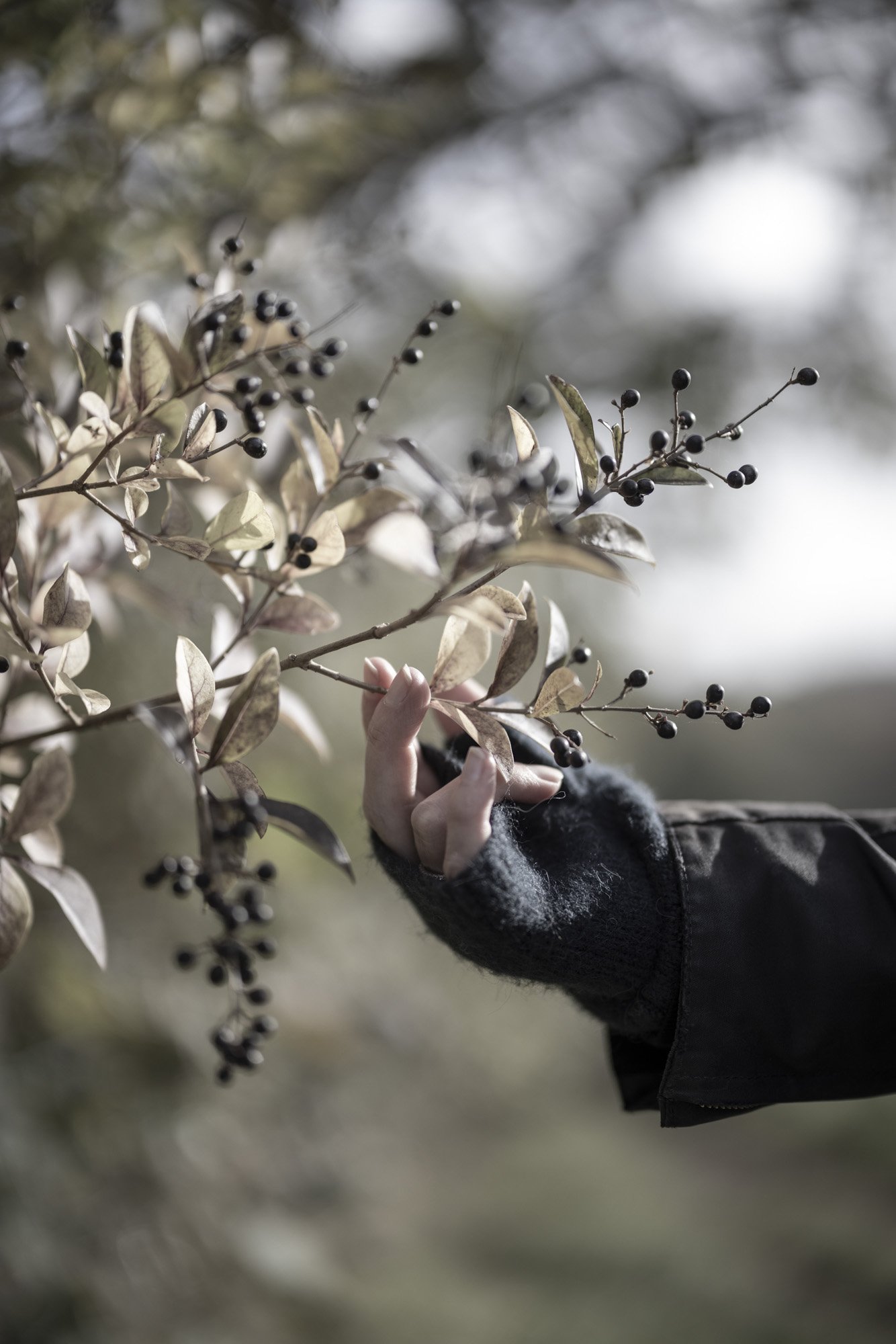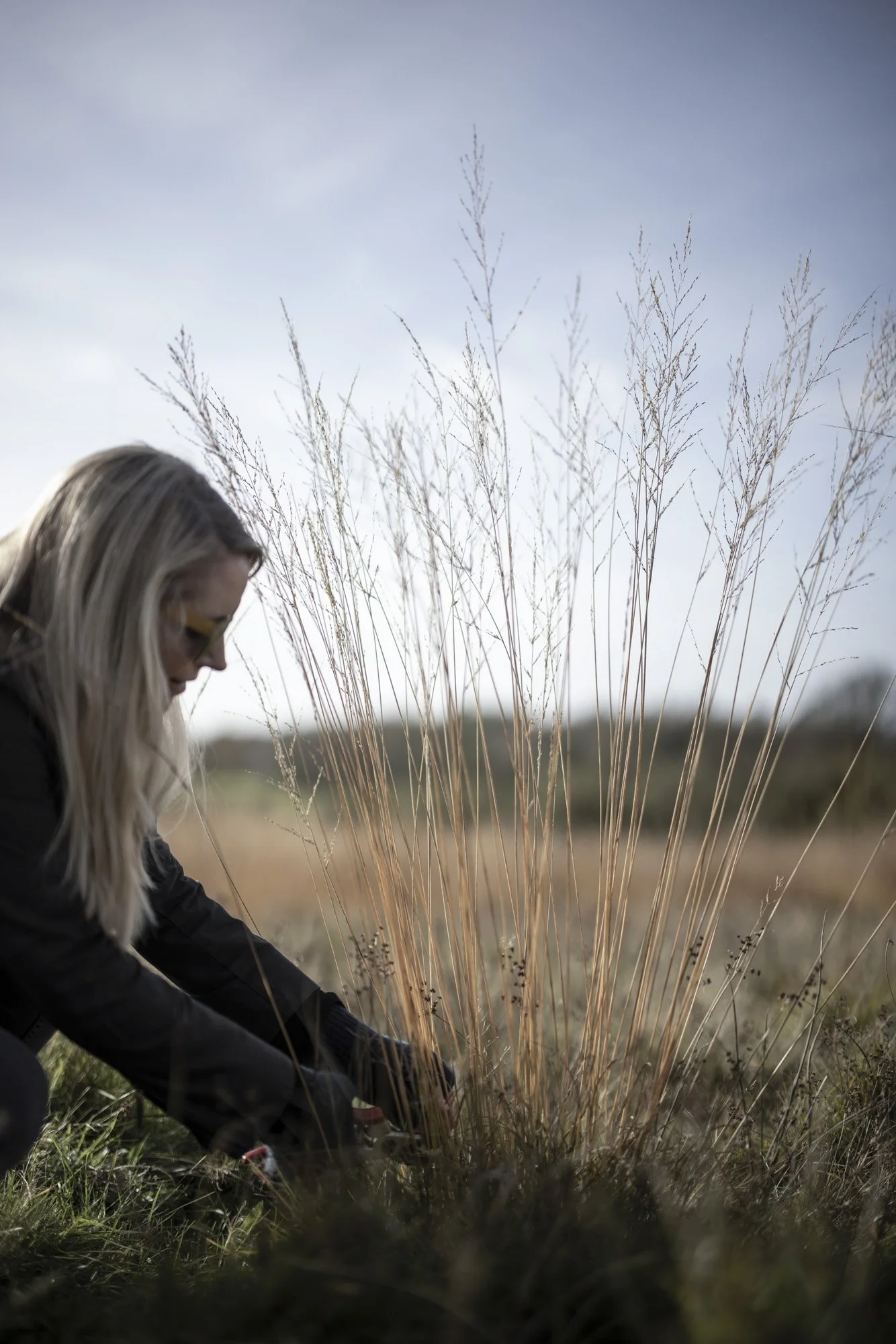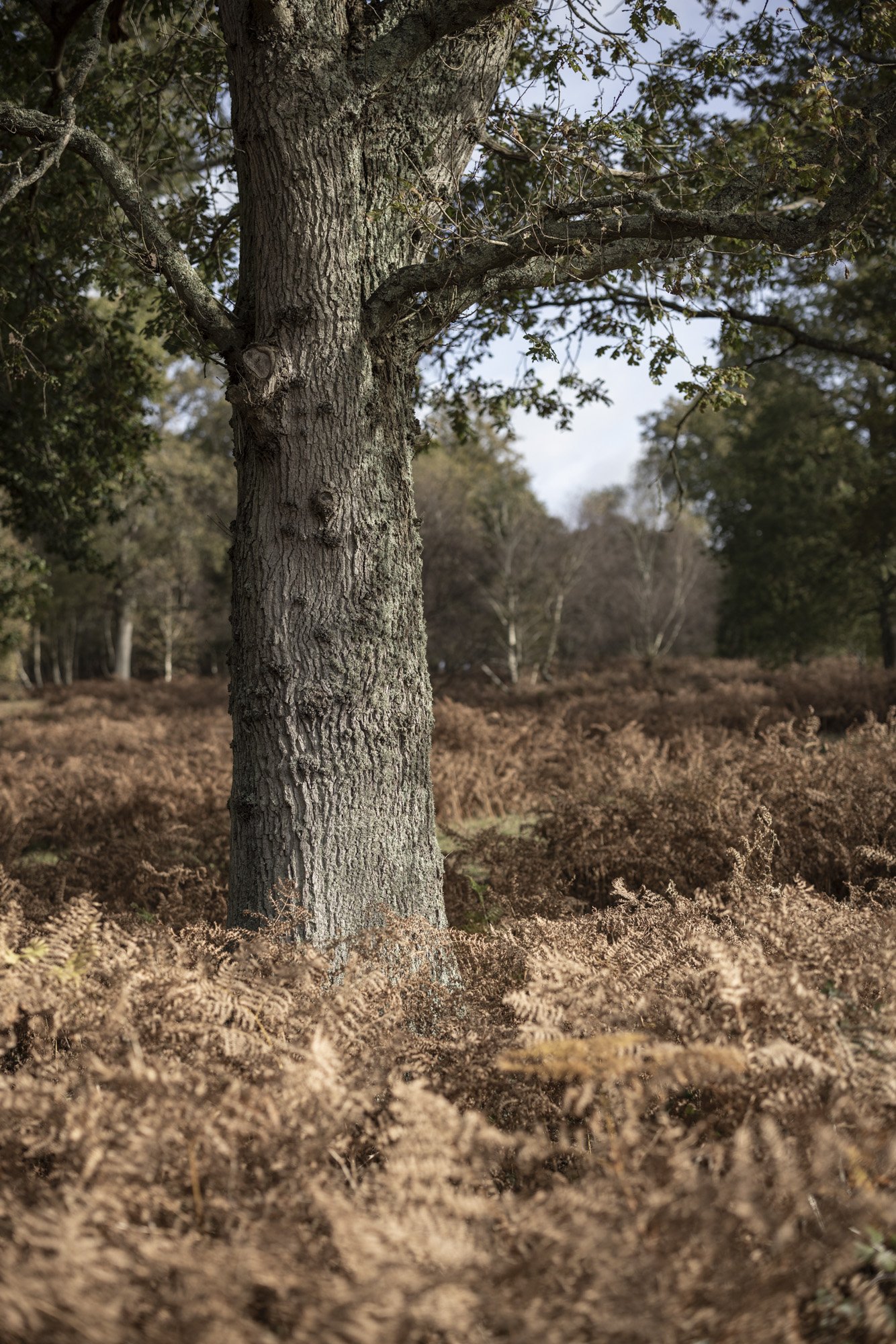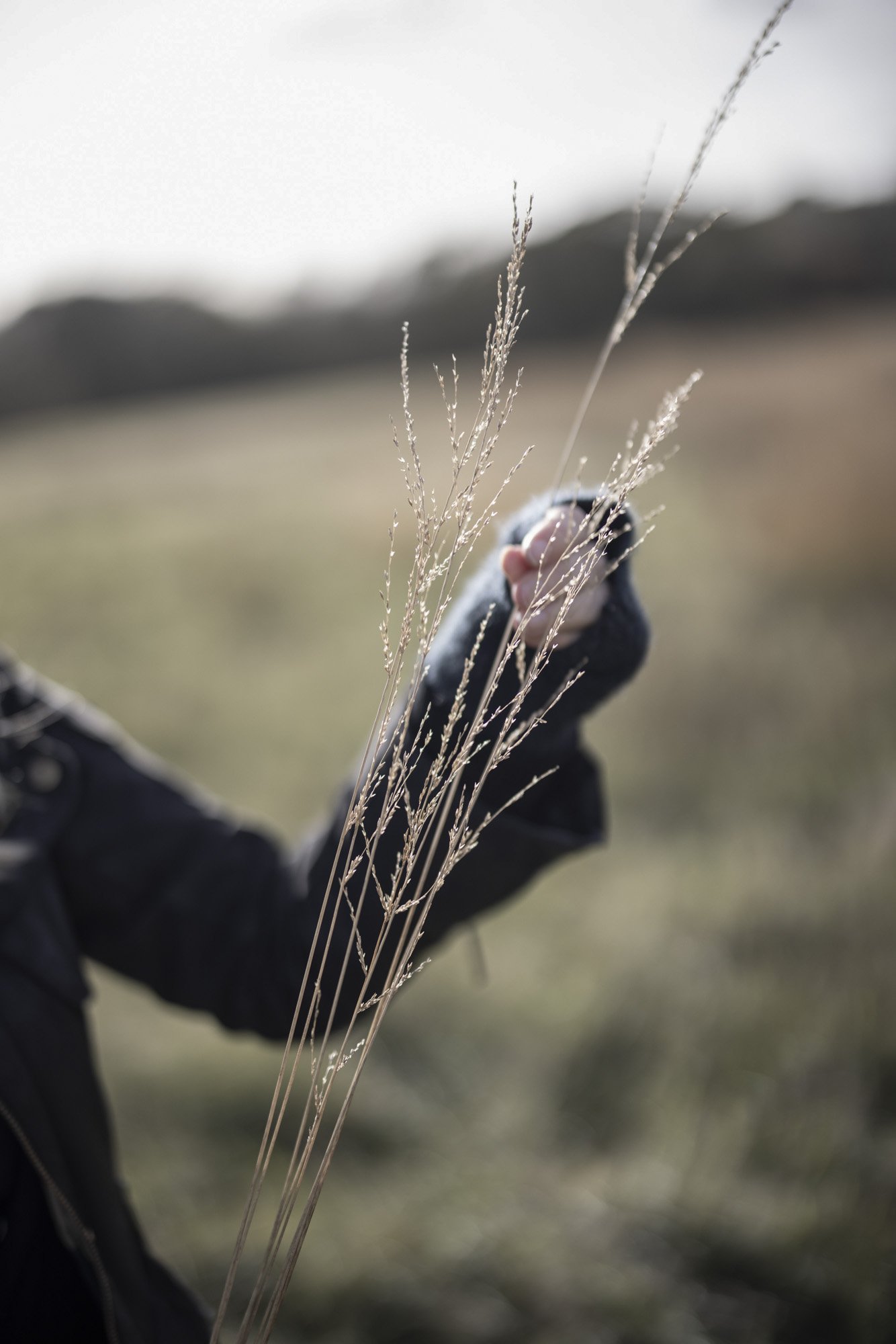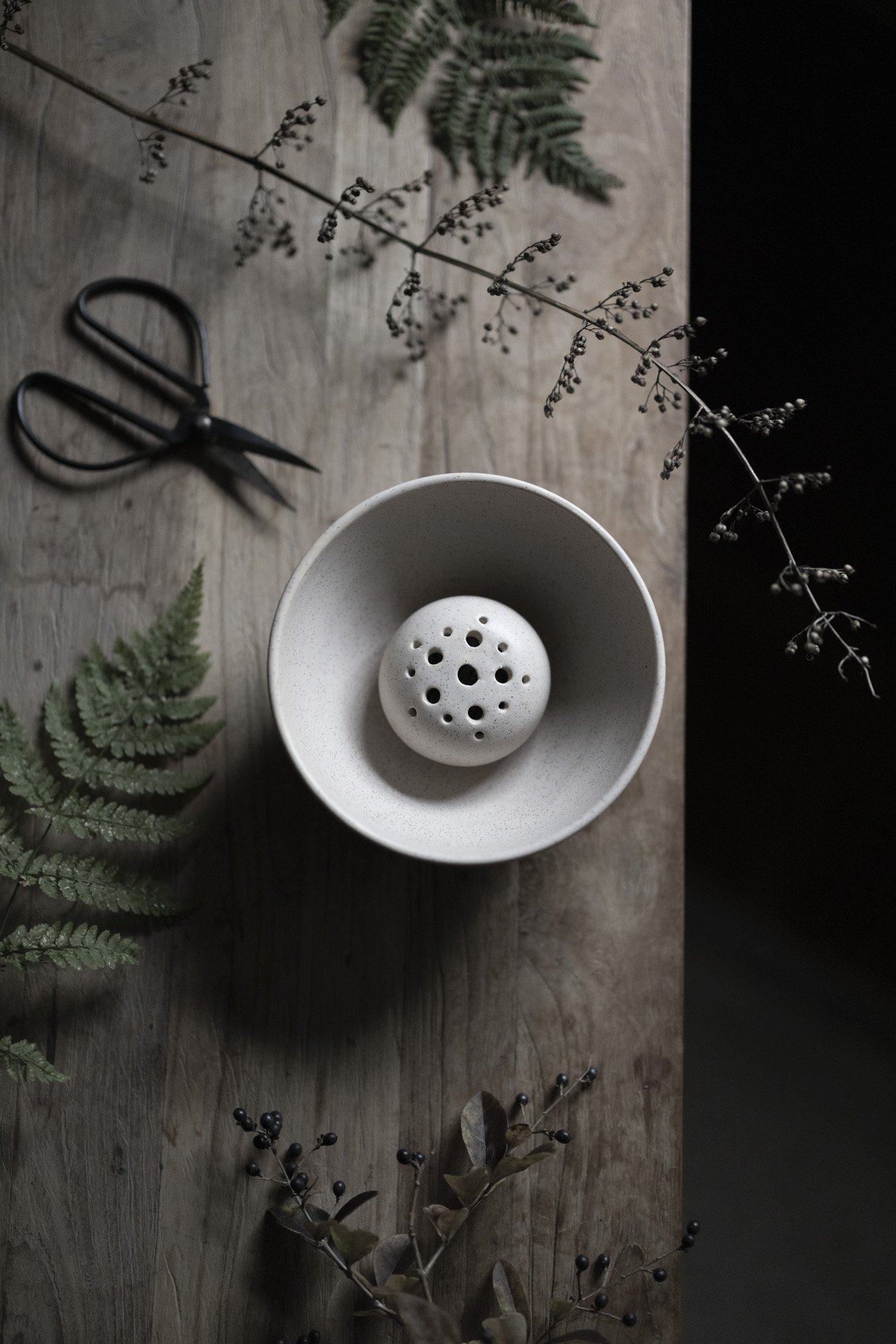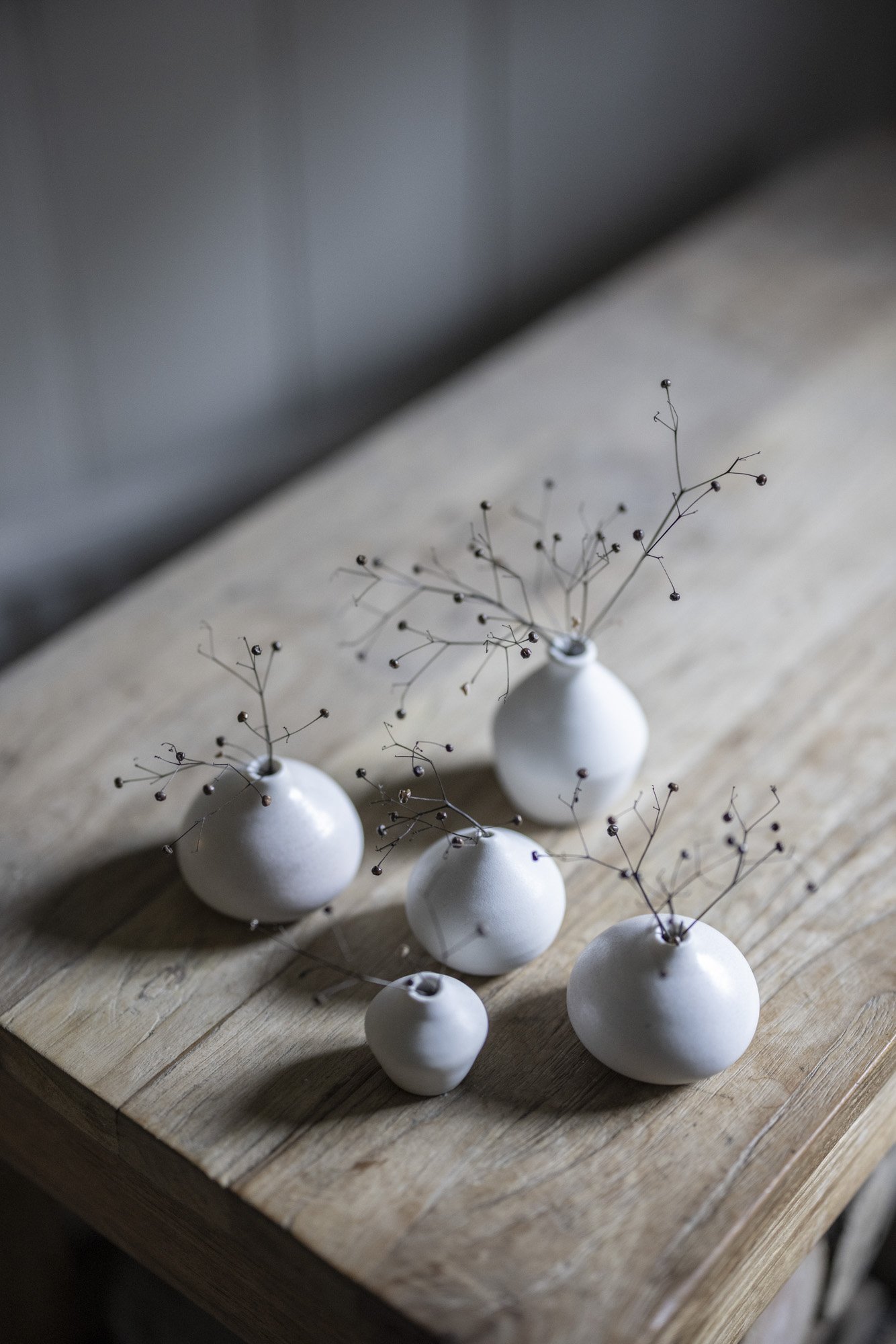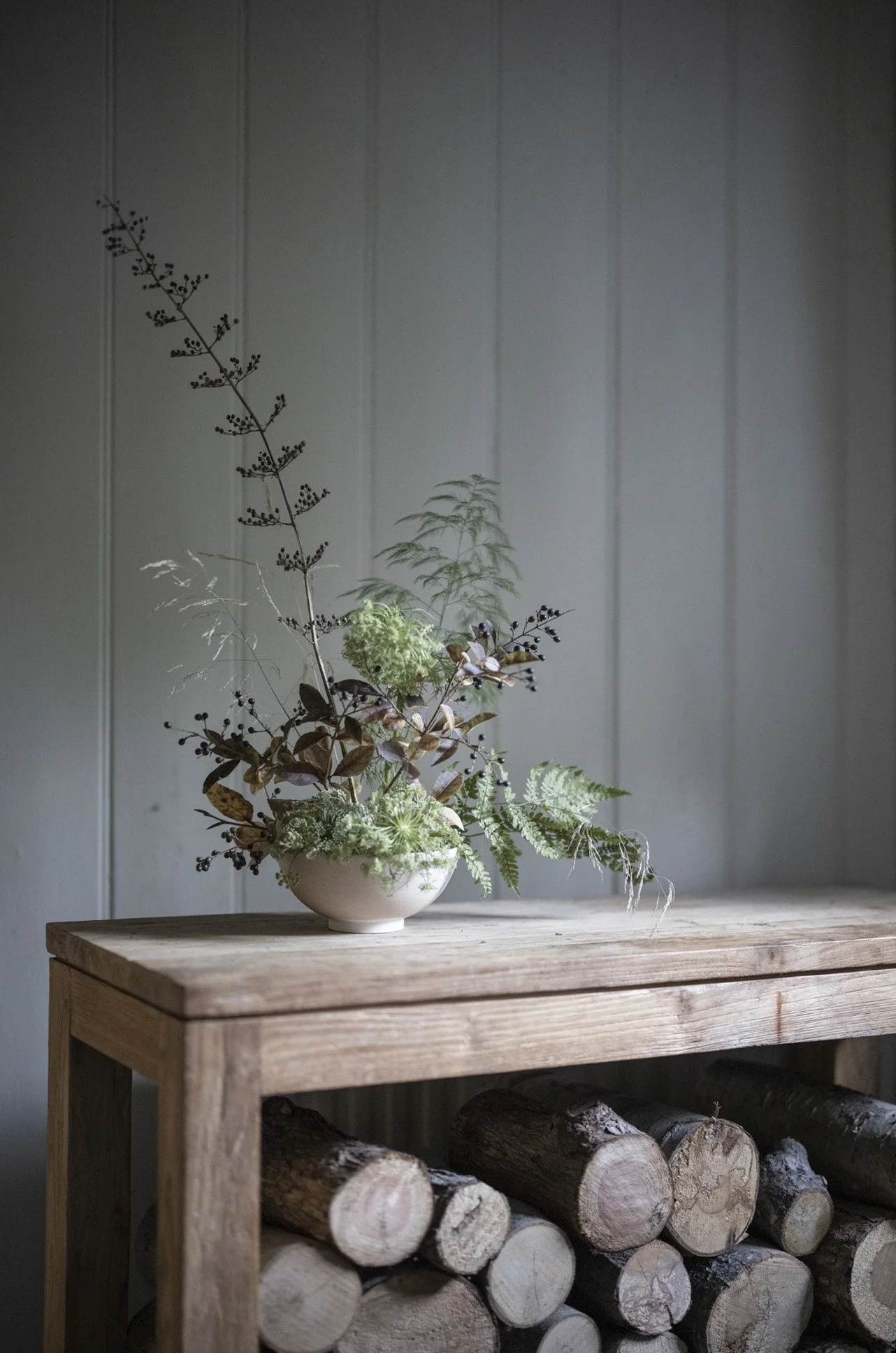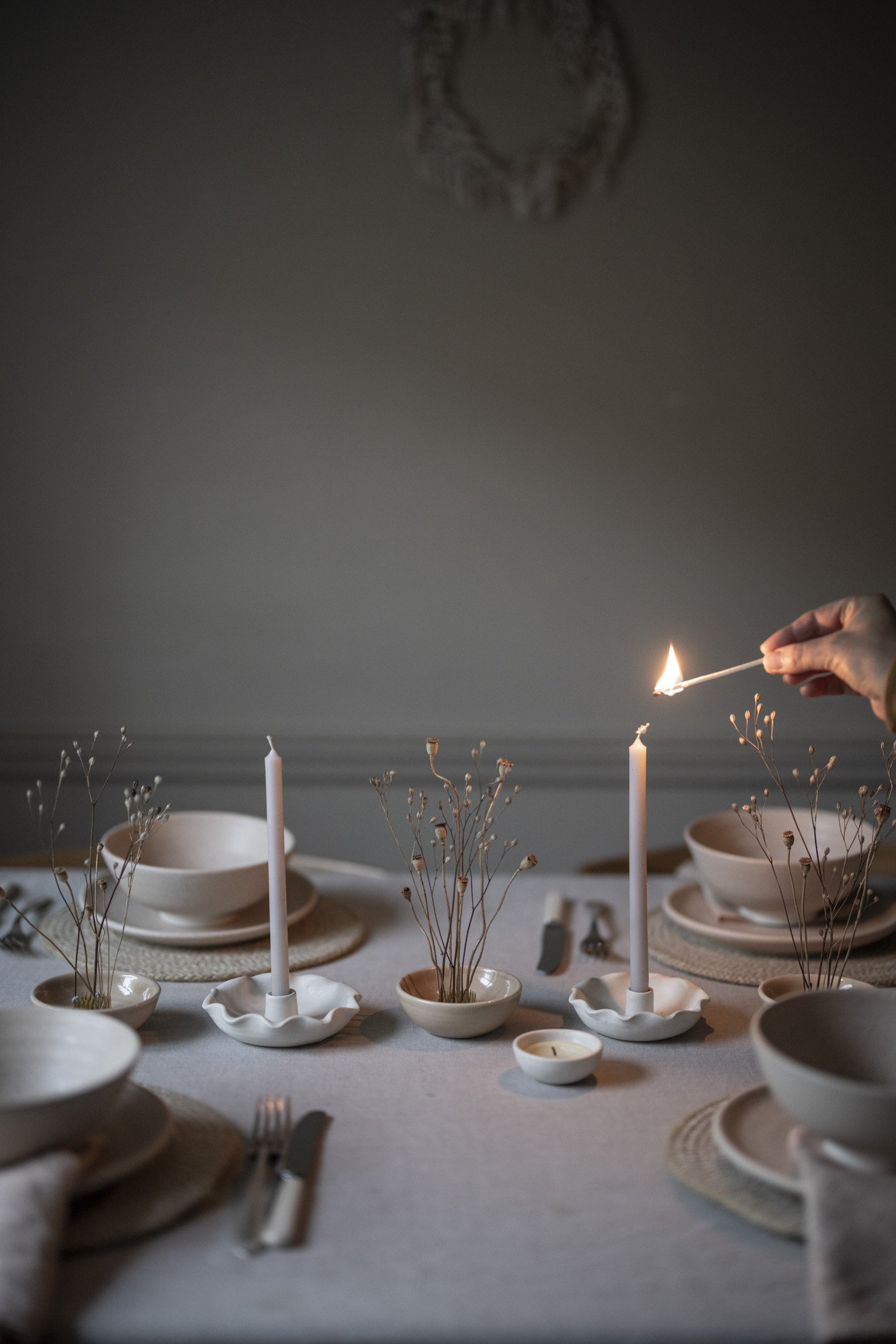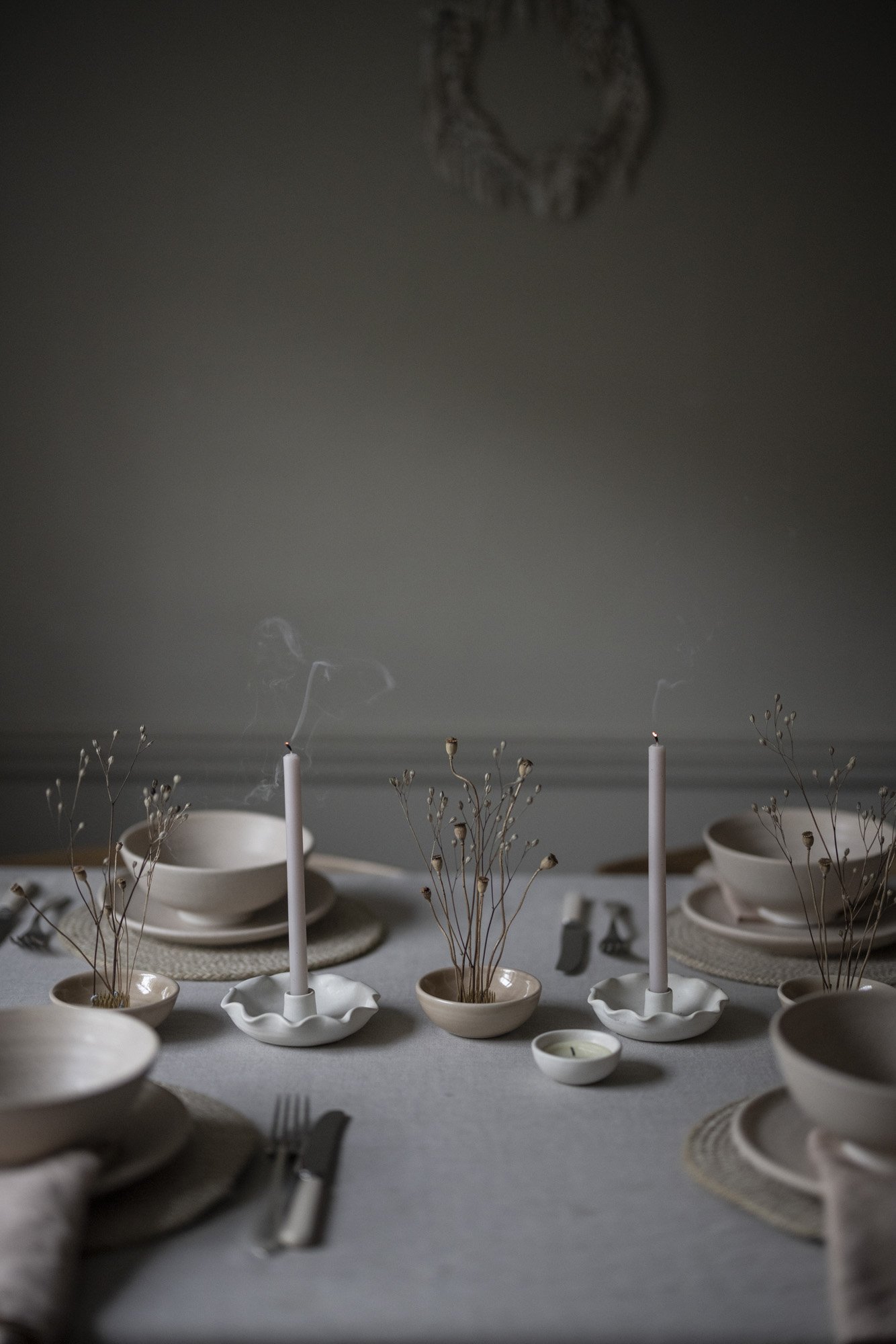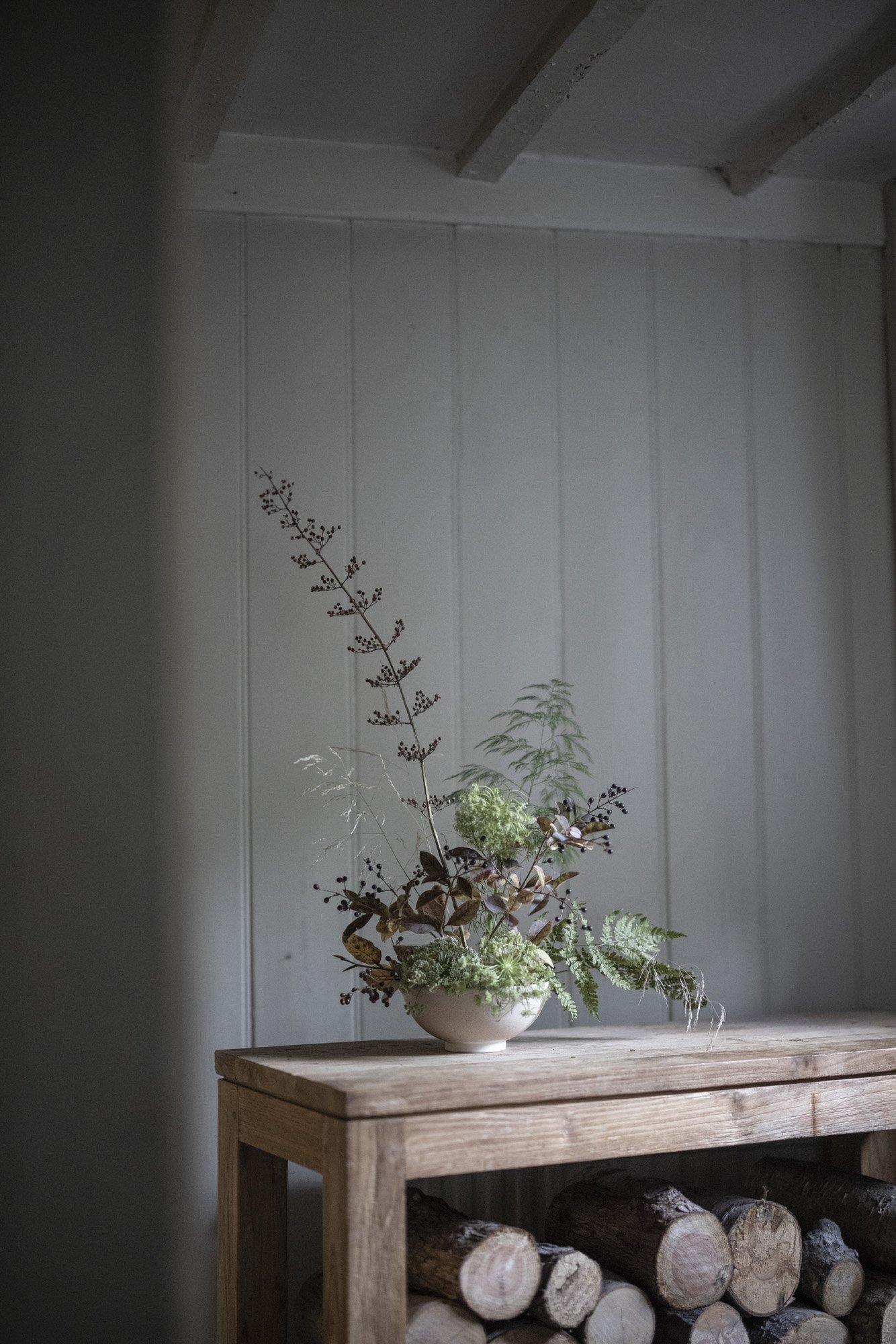7 Tips for Creating Ikebana Inspired Flower Arrangements
As regular readers of the Paper Thin Moon Journal know, faffing with flowers is one of my favourite ways to while away a lazy weekend afternoon, and I’m constantly on the look out for inspiration for new ways to play with grasses and flowers (fresh or dried) and display them at home. Ikebana - the masterful form of arranging flowers that originates in Japan - came onto my radar a couple of years ago when I found myself down a Pinterest rabbit hole.
Ikebana, which translates roughly as “making flowers come alive” is centuries old. While it follows a strict set of rules influenced by minimalist Buddhist principles, the process is designed to be meditative and to promote time for reflection. Ikebana’s roots date back to seventh century Japan, when flowers were given as an offering to the Buddha, but the creative experience; which is centred around the choosing of each stem or branch, while appreciating nature and its forms, is thought to be as important as the final composition of the arrangement.
the archive edit
While I greatly admire some of the beautiful ikebana arrangements created by masters of the art form, I would describe my own creations more as “ikebana-inspired.” Rather than getting too caught up in the rules, I follow the three point, triangular structure principal (that is thought to represent humanity, earth and heaven) as a starting point, then throw caution to the wind and allow myself the freedom to enjoy myself and create something a little more rustic (I find I get frustrated otherwise - and what would be the point in that?!)
An important part of the ikebana process is the acknowledgement and appreciation of seasonal changes, which gives me the perfect excuse for a long walk to forage for what I can pick out from the fields and hedgerows near my home. Autumn is a gift for these type of arrangements, and it also happens to be my favourite time of year, when tall grasses and pretty dried seed heads fill the surrounding countryside.
I like to use shorter stems fixed into these metal kenzans and sit them within these bowls to create a minimal table arrangement that’s big on impact (you can see an example in the opening photograph - and there are more below). For larger, fresh displays, I use our ceramic flower frogs, which I think look super neat inside our new oatmeal Harvest bowls.
The frogs will support stems that are as long as you please (I find vertical height helps gives extra wow factor). These mini vases also make a wonderful display with grasses, long or short. During autumn, the fading golden light at sundown highlights them beautifully.
It is true ikebana can be trickier to master than other ways of arranging flowers - its visual simplicity is deceptive. As there are fewer stems, extra consideration is needed for every detail, as the characteristic bend and form of every stem, leaf and flower is accentuated by the space between them.
Ikebana shapes are traditionally kept minimal and natural. The idea is that the form of your ikebana arrangement is found rather than planned, so allow the plants you’re using to inform the shape of your design. I’d recommend carving out some time to yourself. Silence is important - this is supposed to be a time to be quiet and observe nature, so give yourself time to work in a contemplative way to achieve those ikebana-inspired graceful shapes. It can be incredibly relaxing - the very definition of a mindful activity.
Seven Tips for Creating Your Ikebana Inspired Display
1. Try not to plan out how you want your arrangement to look in advance. One of the principles behind ikebana is the idea that the way stems and flowers are arranged is based on how they come together. I would suggest taking some time out and experimenting and trying to have some fun with it.
2. Start by picking out the stems and flowers that speak most loudly to you and then bring in other stems that complement them. If you’re new to ikebana, try sticking to two or three types of plant to begin with to avoid them clashing with each other.
3. Don’t strive for perfection - pick crooked stems and uneven shapes as they will often look the most pleasing to the eye.
4. Start by aiming to achieve three different focal points or heights - either vertically or horizontally (I find choosing the stem for the highest point first helps). Keep in mind that you’re trying to create asymmetrical balance.
5. If using fresh flowers, fill your bowl or flower frog two thirds full with water (if you’re using dried flowers and grasses this won’t be necessary, but you might find it helps longer, slimmer stems stay upright if you fill your ceramic flower frog with fine gravel or sand).
6. Stand back and have a look at what you’ve created from different perspectives and start thinking about taking stems away or snipping and manipulating what’s there (remember that minimalism is key and less is more when making an ikebana arrangement). Space is important - give your stems room to breathe. Often the arrangement comes together towards the end, once elements have been removed rather than added.
7. Once you’re happy, find an uncluttered spot to view it from (I find a plain wall is best) Remember to have fun with it. Don’t put too much pressure on yourself to create something perfect.
Sign up to receive our quarterly downloadable Creative Living Journal launching in January 2022, as well as updates about new posts on the Journal and VIP access to our subscriber only secret sales.
